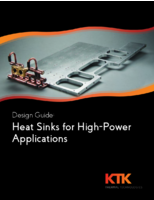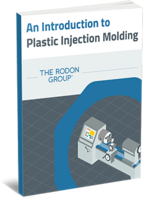Finite Element Software enables field and circuit coupling.
Share:
Press Release Summary:
Offering finite element tool for electromagnetic, heat transfer, and stress analysis, QuickField v5.3 supports circuit analysis coupled with ac magnetics. Capacitance matrix calculation tool automatically creates electrode list for preliminary defined QuickField problem elements. Circuit editor enables operations such as circuit element insertion, deleting, moving, and grouping, as well as parameter editing or changing connecting topology.
Original Press Release:
QuickField Version 5.3 - Coming Soon
Svendborg, Denmark, November 20 2005. A new version of QuickField - the popular finite-element tool for electromagnetic, heat transfer and stress analysis, will be released on December 15, 2005. QuickField 5.3 will support circuit analysis coupled with AC magnetics, expand the functionality of the geometry editor, include a new tool for capacitance matrix calculation and feature compatibility with MatLab, Garfield and other popular applications.
Field and Circuit coupling in the frequency domain
o One exciting new feature of QuickField 5.3 is its field and circuit coupling capability. Solid conductors located in the magnetic field region can now be arbitrarily connected to electric circuit components. Schemes may contain any number of resistors, capacitors, inductors, voltage and current sources. Circuit and field
equations are solved simultaneously and the simulation results are presented as both integral (circuit) and differential (field). This feature is fully integrated and supported by a circuit editor, solver and field-circuit coupling postprocessor.
o The all-new circuit editor provides a simple intuitive interface with a variety of editing commands, which are activated by simple keyboard or mouse clicks. Editing operations include circuit element insertion, deleting, moving, grouping, as well as parameter editing or changing connection topology.
o The magnetic field and electric circuit equations solver combines the advantages of both the direct and iterative methods. It is extremely fast - even when dealing with very large problems with millions of finite elements, connected to hundreds of electric components. It also requires a surprisingly moderate amount of operative memory.
o The field-circuit coupling postprocessor combines all the features of the regular field postprocessor, plus graphical presentation of the circuit simulation. It displays currents and voltages in the circuit components in complex form, either as a median or specific value at any given moment in time.
Model Editor enhancements
The set of standard editing operations in the geometrical Model Editor is now extended by Copy, Cut, Paste commands and a mouse-controlled Drag-and-Drop interface. This can be used across a single model or for transferring between different model files. These greatly anticipated features considerably strengthen the position of the QuickField Model Editor as a simple but fully featured alternative to dedicated CAD systems. Backed by its compatibility with all major CAD systems, the QuickField Model Editor provides all the functionality you may need to modify existing model geometry or create new models "from scratch".
Capacitance Matrix Calculator
Customers working with multi-electrode electrostatic problems will now have the powerful capability of capacitance matrix calculation. This tool automatically creates the electrode list for preliminary defined QuickField problem elements. Graphical user interface allow any electrode grounding, inclusion or exclusion from the calculations.
Corresponding QuickField problems are automatically generated and solved. The resulting matrix of lumped mutual and self-capacitances of the electrode system (suitable for the equivalent electric circuit) is displayed.
Finite element mesh and field export to Matlab and other applications
In Version 5.2 we provided the ability to export the full model mesh and results from the postprocessor to provide compatibility with the popular gaseous detector simulator Garfield. QuickField 5.3 provides the complementary mesh export command for the Model Editor with exported files that are simply formatted so that they can be easily used in
any other applications. When combined with the Matlab module GetQField (available as a MEX-file) this provides the option of converting QuickField mesh and field results to Matlab matrices. The resulting matrix format corresponds to that of the PDE toolbox (and the 2D version of Femlab) thus enabling results and visuals to be processed by the wide range of Matlab instruments.
For further information, a free Student's version of QuickField or our special terms for pre-ordering QuickField 5.3, you are most welcome to contact our Tera Analysis offices in Europe and North America, your local re-selling partner, or simply visit
http://www.quickfield.com




